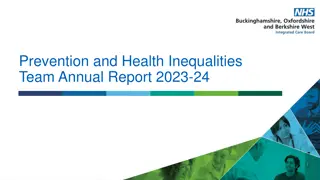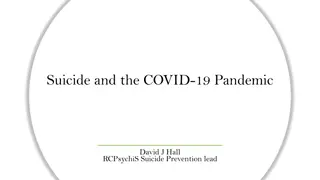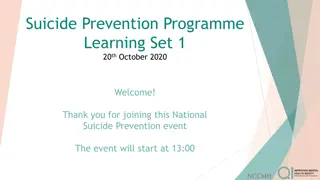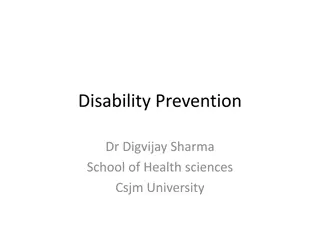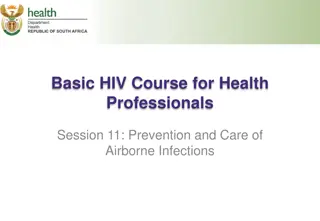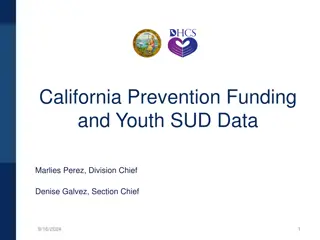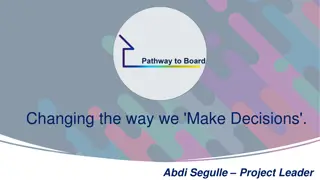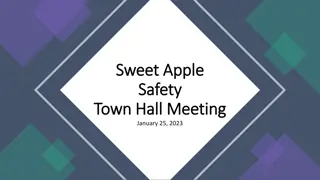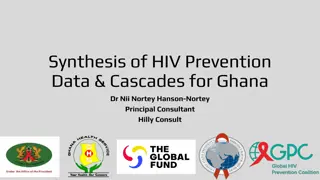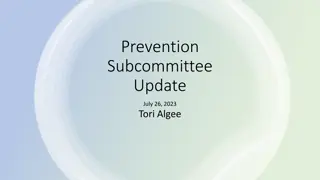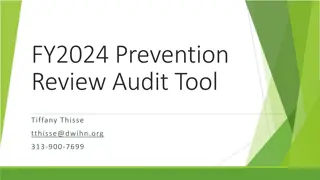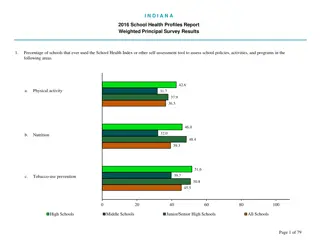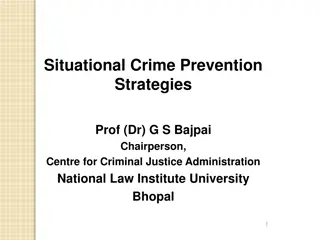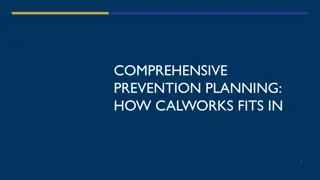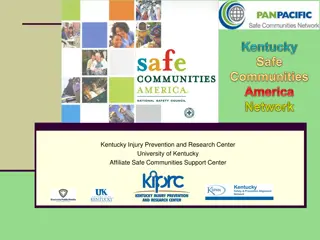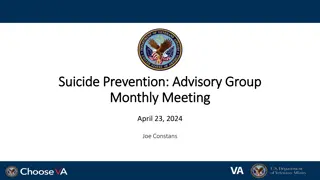
Empowering Parents and School Community to Prevent Bullying in SAU 90
Explore the proactive strategies and roles of parents, students, and schools in preventing bullying in SAU 90. Discover evidence-based programs like Responsive Classroom, OLWEUS, and PBIS that promote positive behaviors. Learn how to identify, address, and report bullying incidents effectively to create a safe and respectful school environment.
Uploaded on | 2 Views
Download Presentation

Please find below an Image/Link to download the presentation.
The content on the website is provided AS IS for your information and personal use only. It may not be sold, licensed, or shared on other websites without obtaining consent from the author. If you encounter any issues during the download, it is possible that the publisher has removed the file from their server.
You are allowed to download the files provided on this website for personal or commercial use, subject to the condition that they are used lawfully. All files are the property of their respective owners.
The content on the website is provided AS IS for your information and personal use only. It may not be sold, licensed, or shared on other websites without obtaining consent from the author.
E N D
Presentation Transcript
Bully Prevention in SAU 90 October 8, 2024
Introduction Everyone has a role to play in bullying prevention and response and to promote a culture of respect, responsibility, and resiliency. Parents and families are central to this effort. Here s information about what parents and families can do to prevent bullying, and what happens when bullying is reported to the school.
Proactively Promoting Prosocial Behaviors Responsive Classroom: Responsive Classroom is a research-based approach to education that is associated with greater teacher effectiveness, higher student achievement, and improved school climate. It has been recognized by the Collaborative for Academic, Social, and Emotional Learning (CASEL) as one of the most well-designed, evidence-based social and emotional learning programs. Responsive Classroom practices help educators build competencies in four key domains, each of which enables and enriches the others: Engaging Academics, Positive Community, Effective Management, and Developmental Awareness. OLWEUS: The OLWEUS Bullying Prevention Program is the most researched and best-known bullying prevention program available today. Dr. Dan Olweus of Norway developed this program based on thirty-five years of research and has implemented this program throughout the world. Bullying behavior needs to be addressed at all levels of a student s experience at the classroom level, school wide, individual and within the student s community. Positive Behavioral Interventions and Supports: PBIS is a systematic framework for improving valued social, emotional, behavioral and learning outcomes for middle school children. PBIS uses a broad set of evidence-based systematic and individualized strategies to effectively prevent and respond to problem behavior. PBIS is a proactive approach to school-wide discipline. The focus is to reinforce the positive behaviors of students as well as support students who need extra assistance.
Prevention and Education School's role: Student's role: Provide annual training for staff on bullying policies Implement anti-bullying curriculum for students Develop positive school climate initiatives Participate in anti-bullying education programs Report bullying when it occurs Support peers who may be victims Refuse to participate in bullying behaviors Parent's role: Encourage children to report bullying Discuss bullying behavior with children regularly Cooperate with school in addressing incidents Model respectful behavior
Bullying is hereby defined as a single significant incident or a pattern of incidents involving a written, verbal, or electronic communication, or a physical act or gesture, or any combination thereof, directed at another pupil which: 1. 2. Physically harms a pupil or damages the pupil s property; Causes emotional distress to a pupil; i. For the purposes of this policy, the term emotional distress means distress that materially impairs the student s participation in academic or other school sponsored activities. The term emotional distress does not include the unpleasantness or discomfort that accompanies an unpopular viewpoint. Interferes with a pupil s educational opportunities; Creates a hostile educational environment; or Substantially disrupts the orderly operation of the school. Bullying shall also include actions motivated by an imbalance of power based on a pupil s actual or perceived personal characteristics, behaviors, or beliefs, or motivated by the pupil s association with another person and based on the other person s characteristics, behaviors, or beliefs. 3. 4. 5.
Procedure for Reporting Suspected Bullying At each school, an Administrator shall be responsible for receiving complaints of alleged violations of this policy. Reporting: 1. Any student who believes he or she has been the victim of bullying should report the alleged acts immediately to an Administrator. If the student is more comfortable reporting the alleged act to a person other than the Administrator, the student may tell any school district employee or volunteer about the alleged bullying. Any school employee or volunteers who witnesses, receives a report of, or has knowledge or belief that bullying may have occurred shall inform an Administrator as soon as possible, but no later than the end of that school day. Although students, parents, volunteers and visitors may report anonymously, formal disciplinary action may not be based solely on an anonymous report. Independent verification of the anonymous report shall be necessary in order for any disciplinary action to be applied. Upon receipt of a report of bullying the Administrator shall commence an investigation consistent with the provisions of Section XI of this policy. 2. 3. 4.
Investigative Procedures An Administrator shall report to the parents of a student who has been reported as a victim of bullying and to the parents of a student who has been reported as a perpetrator of bullying within 48 hours of receiving the report. Upon receipt of a report of bullying, the Administrator shall, within 2 school days, initiate an investigation into the alleged act. A maximum of 5 school days shall be the limit for the initial filing of incidents and completion of the investigative procedural steps. The Administrator shall complete the investigation within 5 school days of receiving the initial report. If the Administrator needs more than 5 school days to complete the investigation, the Superintendent may grant an extension of up to 5 school days. In the event such extension is granted, the Administrator shall notify in writing all parties involved of the granting of the extension.
Communication with Parents Upon Completion of Investigation Within 24 hours of completing an investigation, the Administrator will notify the students involved in person of his/her findings and the result of the investigation. 1. The Administrator will send a letter and notify via telephone the parents of the alleged victim and alleged perpetrator of the results of the investigation. The Administrator will also send a letter to the parents within 24 hours again notifying them of the results of the investigation. 1. If the parents request, the Administrator shall schedule a meeting with them to further explain his/her findings and reasons for his/her actions. 1. In accordance with the Family Educational Rights and Privacy Act and other law concerning student privacy, the District will not disclose educational records of students including the discipline and remedial action assigned to those students and the parents of other students involved in a bullying incident.
Potential Consequences Policy JICK outlines a progressive discipline matrix to use to guide Administrators should this result in a substantiated case of bullying.

